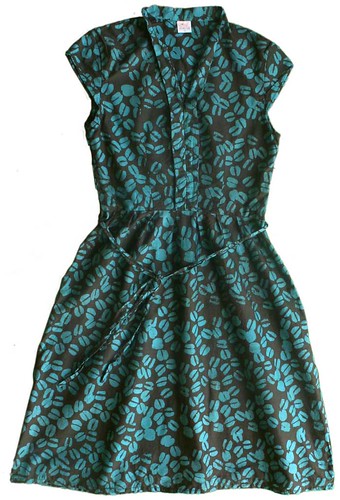I often have conversations with peers about how to garner more credibility for fashion studies. The difficulty lies mainly in the fact that there is little to no "defined" methodology for our field - I've run up against this wall several times during my experiences at school. For example, my approach to fashion studies as an anthropologist is different than, say, a historian, a chemist, even a designer's own approach. Of course, a set methodology takes years to develop and until collaboration between disciplines is more concrete, this goal may be even farther out of reach.
In my case, the future of anthropology relies on practicing field work, generally set up within two categories - archaeological, and ethnographic. The latter concerns cultural anthropology, for it is developed based on interactions with and observations of people, not just things and places.
Much ethnographic research within the field of fashion studies pertain to indigenous cultures, who's traditional uses of dress are still practiced today. Although intriguing, this research only benefits our understanding of a specific cultural practice, not fashion studies as a whole. In order to legitimize our field, there needs to be a reform in the way ethnographic fashion research is carried out.
Frances Ross' field research on the "bespoke" and "demi-bespoke" tailoring industry in present day London is an excellent example of progressive ethnographic research in the field of fashion studies. Utilizing such research approaches as participant observation and qualitative interviewing, Ross (
Course Director at the London College of Fashion) investigated "what is currently happening in the industry in terms of textiles, colour, style and manufacture" (Ross, 281). Her article published in
The Journal of the Textile Institute (2007:i. 98:n. 3) maps out a perfect methodology for future studies that would be taken seriously by any anthropological expert.
Ross introduces her topic with a brief history of the London tailoring districts, many of which became subjects of her study. She continues with a list of publications concerning "Men's bespoke and ready-made tailoring texts" to support her project (Ross, 283). Her study rationale explores the concept of "phenomenological research," her decisions to use qualitative over statistical data and a relative definition of ethnography which may not be so easily understood by those outside of the field of anthropology (Ross, 283). She includes her sampling and interview methodology, and provides a chart of participating establishments, their location, date and time of interview and other establishments that were subsequently recommended to her by each interviewee.
A lengthy section is dedicated to actual interview snippets which support her research. The tailors featured discuss topics such as definitions of "New English Tailoring," fabric choice innovations, technological advancements and how they are implemented within the tailoring industry, and stylistic influences upheld by current tailors.
Ross' study is intriguing and incredibly well put together. Other similar studies have been attempted but none have resulted in such a smooth presentation as "Refashioning London's Bespoke and Demi-Bespoke Tailors." I'll keep Ross' methodology and approach in mind for future studies. I'm also interested in finding similar studies to keep on hand as examples. I'll be applying for a Fulbright fellowship soon and will need all the polished ethnographic field research I can get!










Breward, Christopher. "Cultures, Identities, Histories: Fashioning a Cultural Approach to Dress." Fashion Theory: The Journal of Dress, Body & Culture, 2.4
Browne, Ray B. and Pat Browne, Eds. Methodologies in Archeology, Anthropology and other Fields.
Geertz, Clifford. The Interpretation of Culture: Selected Essays.
Gott, Suzanne. "Asante High-timers and the Fashionable Display of Women's Wealth in Contemporary Ghana" Fashion Theory: The Journal of Dress, Body & Culture,13.2
Prown, Jules David. “Mind in Matter: An Introduction to Material Culture Theory and Methodology.” Winterthur Portfolio 17 (Spring 1982).